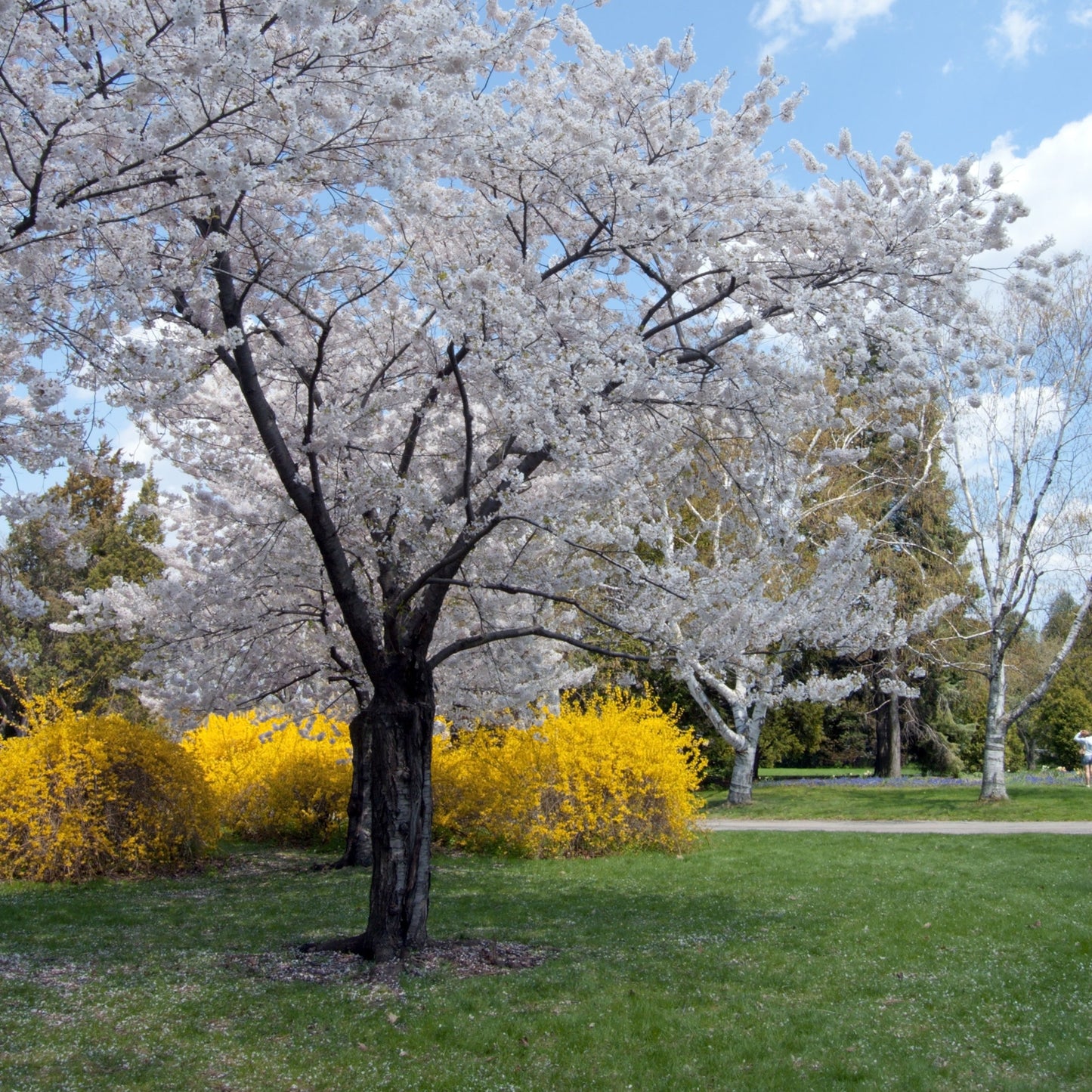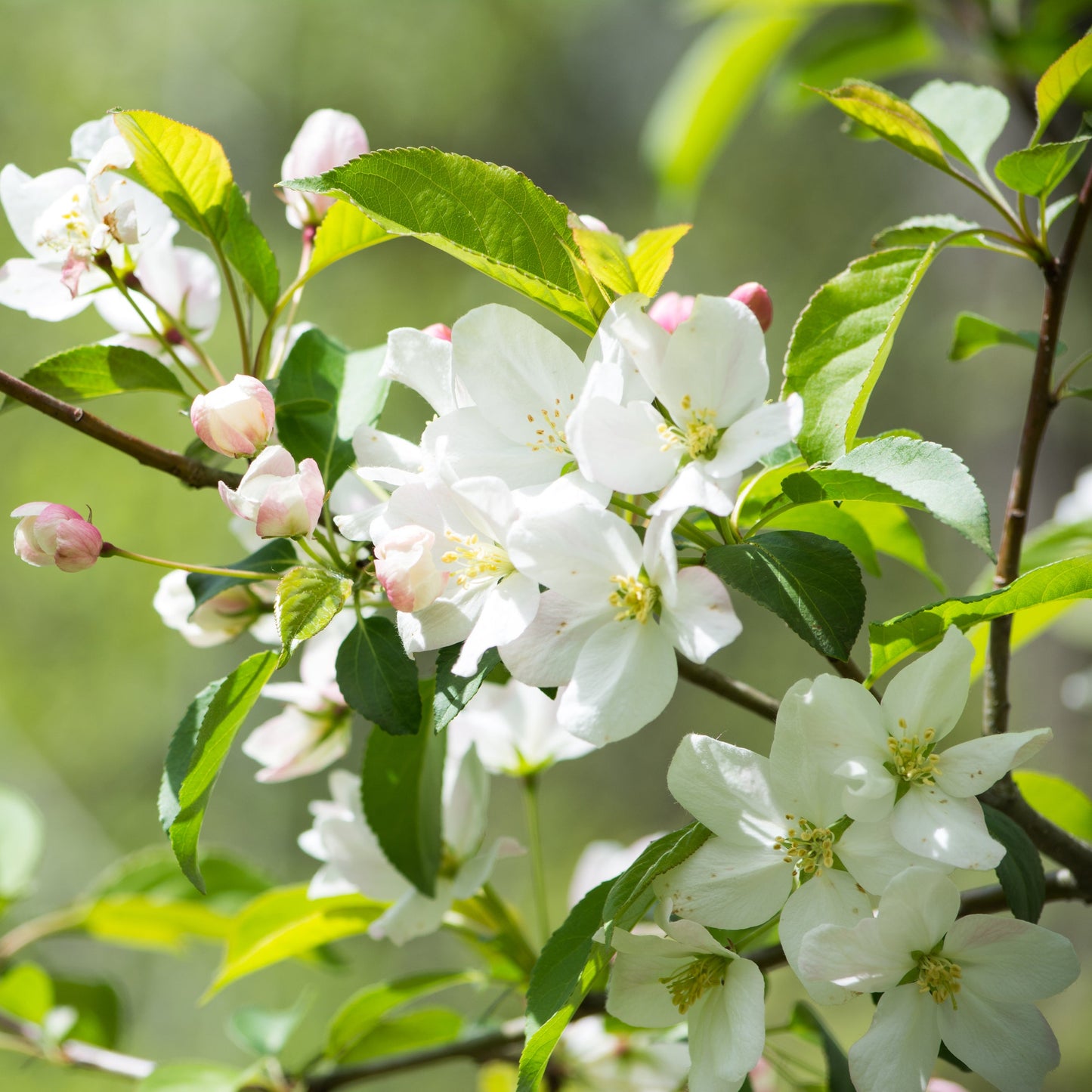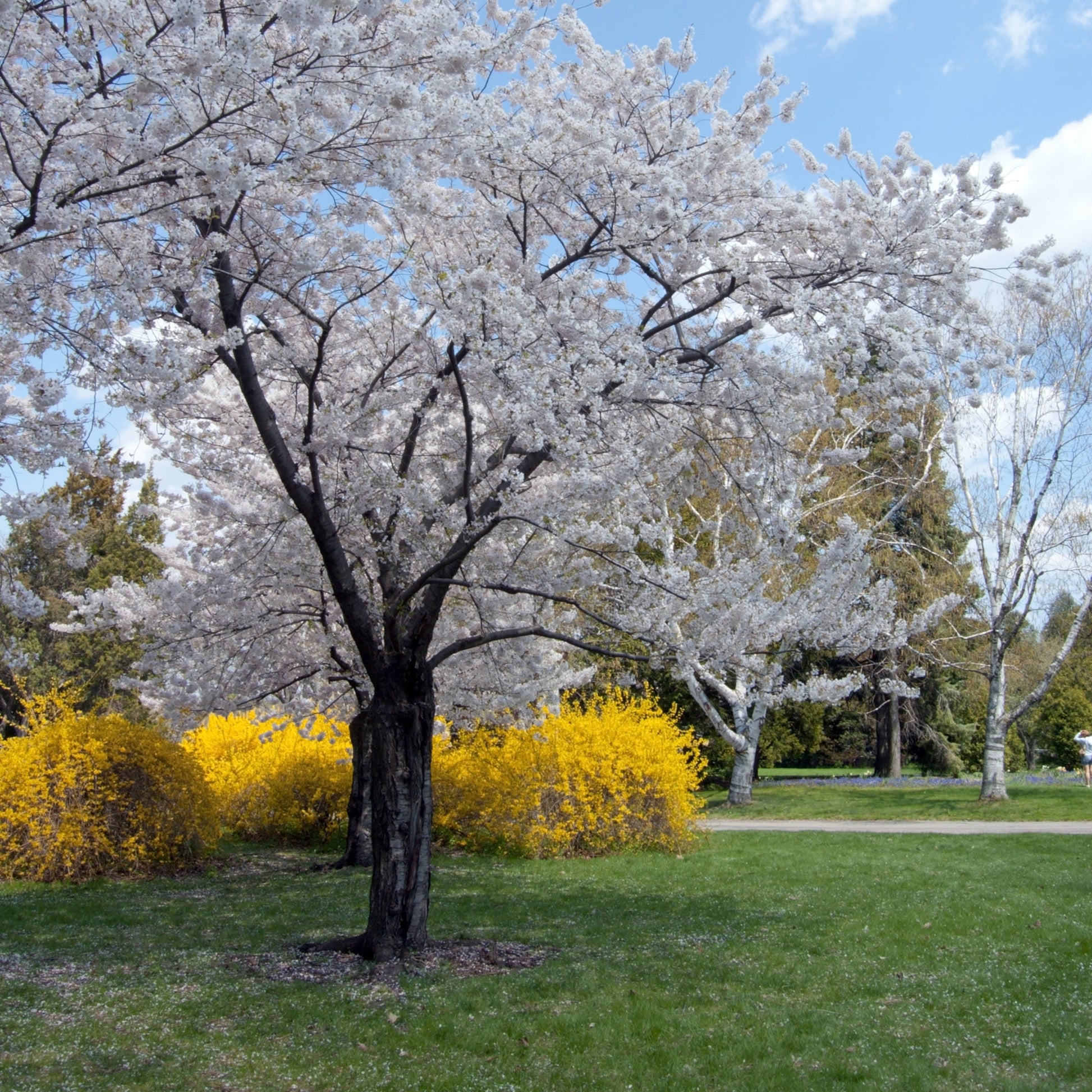Limited Quantities - Reserve Now For Fall
Snowdrift Crabapple Tree
Snowdrift Crabapple Tree
Couldn't load pickup availability
Malus ‘Snowdrift’
Snowdrift Crabapple Tree
The Snowdrift Crabapple Tree is a classic ornamental tree loved for its abundant spring blooms, glossy green foliage, and persistent orange-red fruit. With its uniform, rounded canopy and exceptional disease resistance, Snowdrift is a top performer in both residential and commercial landscapes.
This dependable cultivar provides multi-season beauty, from a cloud of white blossoms in spring to its vibrant fruit and golden fall foliage. It’s an ideal choice for pollinator gardens, specimen planting, and wildlife-friendly landscapes.
Snowdrift Crabapple Tree Overview
| Attribute | Details |
|---|---|
| 🌿 Botanical Name | Malus ‘Snowdrift’ |
| 🏷️ Common Names | Snowdrift Crabapple |
| 🌳 Mature Height | 15–20 feet |
| 🌐 Mature Width | 15–20 feet |
| 📈 Growth Rate | Moderate (1–2 feet per year) |
| ⏳ Lifespan | 30–50 years |
| 🧊 USDA Zones | 4–8 |
| ❄️ Chill Hours | 800–1,000 hours |
| ☀️ Sun Preference | Full sun (critical for bloom density and fruit color) |
| 🧱 Soil Type | Well-drained loam, sandy, or clay soils |
| ⚖️ Soil pH | Slightly acidic to neutral (6.0–7.0) |
| 💧 Water Needs | Moderate; prefers evenly moist soil during establishment |
| 🌸 Flower Color | Pink buds opening to white blooms in mid-spring |
| 🍎 Fruit Type | Small, orange-red crabapples; persist into winter |
| 🐝 Pollination | Attracts bees, butterflies, and birds |
| 🌿 Growth Habit | Dense, rounded canopy with upright branching |
| ↔️ Spacing | 15–20 ft for specimen or border use |
| 🏡 Landscape Uses | Pollinator gardens, front yards, formal borders, wildlife gardens |
| 🧹 Maintenance Level | Low to moderate |
Environmental Benefits
🌸 Provides early-season nectar for native pollinators and honeybees
🍎 Produces persistent fruit that supports winter bird foraging
🌿 Adds year-round structure and seasonal color to ornamental plantings
🌎 Contributes to urban biodiversity and ecosystem health
Pros & Cons
| ✅ Pros | ⚠️ Cons |
|---|---|
| 🌸 Dense, snowy-white blooms create spring spectacle | 🍎 Fruit drop may cause minor cleanup in high-traffic areas |
| 🌿 Compact size suits urban and suburban spaces | ❄️ Flowers may be sensitive to hard late frosts |
| 🍎 Persistent fruit adds fall and winter color | ✂️ Light pruning may be needed to maintain form or remove suckers |
| 🧬 Excellent disease resistance to scab and mildew | 🌱 Moderate growth rate slower than fast-fill varieties |
| 🐝 Highly attractive to bees and butterflies | 🐛 Occasional pest issues if overcrowded or overwatered |
Planting & Care Guide
🛁 Water thoroughly before and after planting; keep soil evenly moist
🕳️ Dig a hole twice the width of the root ball; plant at the original soil depth
🌾 Apply 2–3 inches of mulch around base to retain moisture and reduce weeds
💦 Water weekly in the first year, especially during hot or dry spells
✂️ Prune in late winter to maintain shape and encourage airflow
🧪 Fertilize annually in spring with a balanced tree and shrub blend
The Snowdrift Crabapple Tree is a compact ornamental workhorse, offering stunning spring flowers, colorful fruit, and dependable performance in all seasons. Whether you're creating a formal border, pollinator paradise, or classic front-yard statement, this variety delivers charm, structure, and ecological value with timeless beauty.
Share




